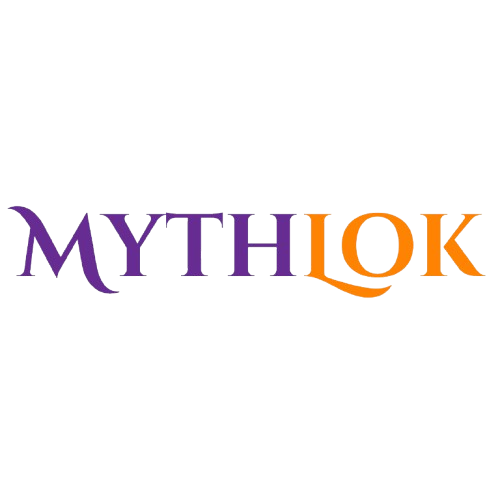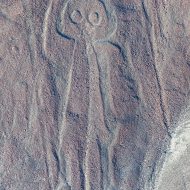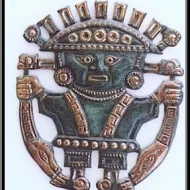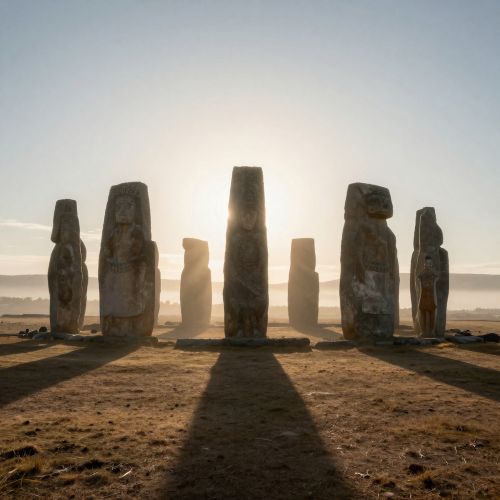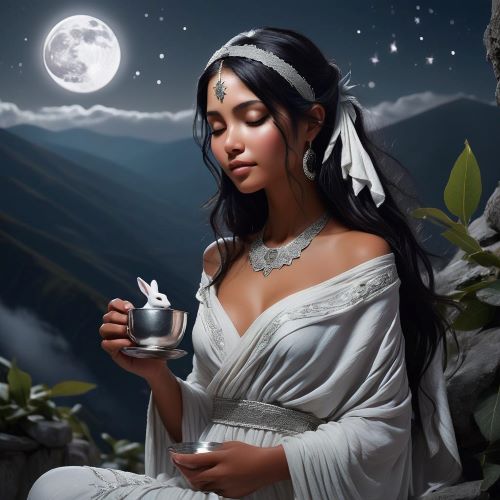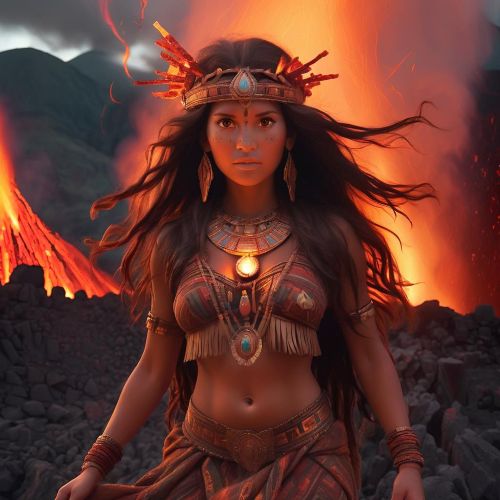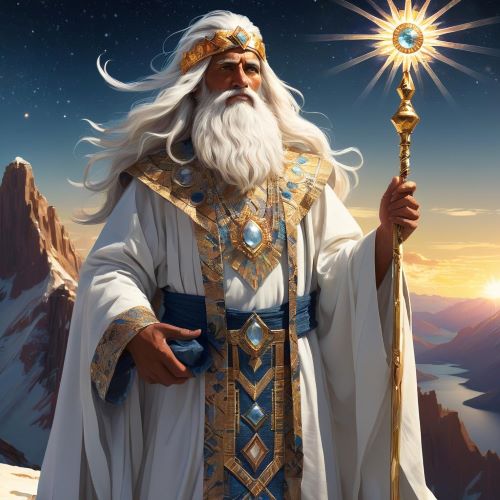Kon : The Wind God
Listen
At a glance
| Description | |
|---|---|
| Origin | Aztec Mythology |
| Classification | Gods |
| Family Members | Inti (Father), Mama Killa (Mother) |
| Region | Peru |
| Associated With | Wind, Rain |
Kon
Introduction
Kon was the god of wind and rain in pre-Incan mythology. He was the child of the sun god Inti and the mother moon goddess Mama Killa. He is believed to have been a deity of the Paracas civilization who was later adapted by the Incas.
Physical Traits
Although he was described as a creature that looked like a human, he had no bones or joints. In some legends, he was said to have been carried in with a mask of a bird on his face. He was also known for having large eyes, which led to him being called the “Dios Oculado” or “eyed god.”
Family
Kon was said to be the son of the sun god Inti and Mama Killa.
Powers and Abilities
He was said to have created valleys and mountains at his will, and he was responsible for providing the people with bountiful food supplies. Whenever he appeared, he would bring rain, which would help the people and their agriculture flourish. He only requested that they continue honoring him. The people would often dance and tell Kon’s story in order to appease him. When the humans forgot about their debts to him, he punished them by taking away the rain and turning the land into coastal deserts.
A god from the South tried to challenge Kon. He was known as Pachacamac, and he was the son of Inti. They fought, and he defeated Kon, who then disappeared. He then turned the people into creatures, such as foxes, birds, and monkeys, and he created new people by letting them live in the Andes. It is believed that the pair of Kon and Pachacamac represent the conflict between the day and the night. They can represent various battles between the moon, sun, and the South and North.
Modern Day Influence
The Nazca people believed that dancing was a way to appease the god. They performed cultural and ceremonial dances in order to continue the story of the creation, and the Nazca lines were made to tell it. Some believed that the geoglyphs were made to let the gods see what was happening in the sky, as well as where the people lived.
Scholars believe the Nazca line, which is referred to as “The Astronaut,” is a depiction of Kon, as he appears to have no joints or bones. It’s believed that the large drawing was made to honor him, as it predicted the coming rains. Other forms of worship were also practiced, such as weaving and pottery.
Related Images
Source
- Godchecker.com. “Kon.” Godchecker – Inca Mythology. https://www.godchecker.com/inca-mythology/KON
Frequently Asked Questions
Who is Kon in Inca mythology?
Kon, also known as Kón, is a significant deity in Pre-Incan and Incan mythology. He is primarily recognized as the god of rain and wind, originating from the North. Kon is believed to have been a deity of the Paracas civilization and was later integrated into Nazca and Incan mythology
What are the main attributes of Kon?
Kon is often depicted as a slender, jointless figure with a sickly yellow-green complexion. He has a bird mask and large eyes, earning him the title “Dios Oculado” or “eyed god.” Kon’s primary attributes are his control over rain and wind, which he uses to either bless the land with fertility or curse it with drought.
How did Kon influence the Incan civilization?
Kon’s influence was significant as he was responsible for bringing rain, a vital resource for the agricultural-based society. When people failed to honor him, he withdrew the rains, turning fertile lands into deserts. This narrative underscores the importance of respecting and appeasing the gods for the well-being of the community.
What is the legend of Kon's conflict with Pachacámac?
According to legend, Kon had a conflict with Pachacámac, another prominent god. Pachacámac eventually defeated Kon and cast him away, symbolizing the struggle between opposing forces, such as day and night or the North and the South. This conflict highlights the dynamic interplay of deities in Incan mythology.
How did Kon impact the beliefs and practices of the Pre-Incan civilizations?
Kon had a profound impact on the beliefs and practices of Pre-Incan civilizations, particularly the Paracas and Nazca cultures. As a rain god, he was integral to agricultural success, which was central to these societies’ survival. Festivals, rituals, and offerings were often dedicated to Kon to ensure his favor and bring necessary rainfall.

